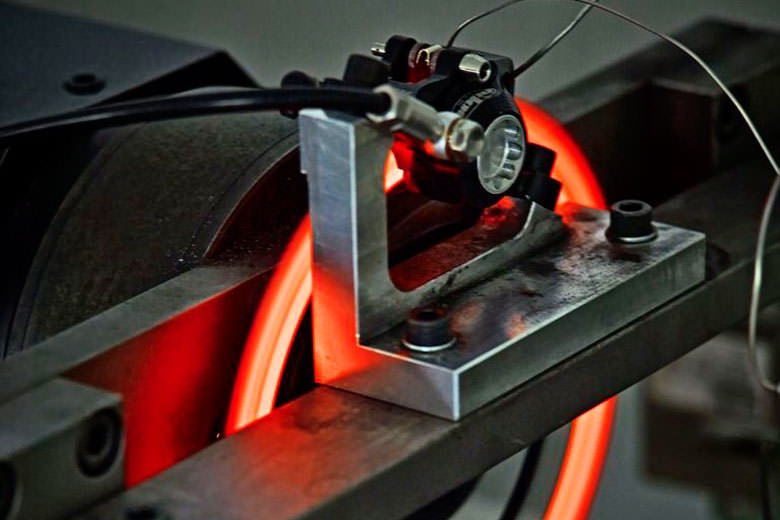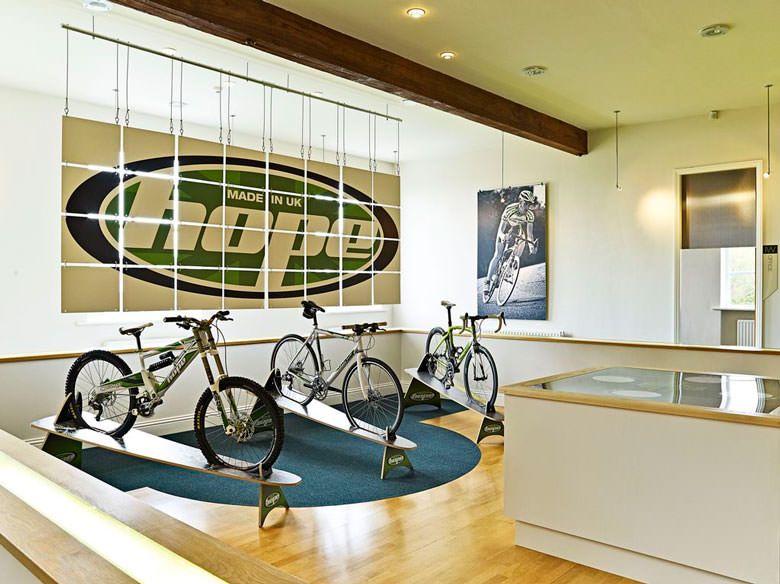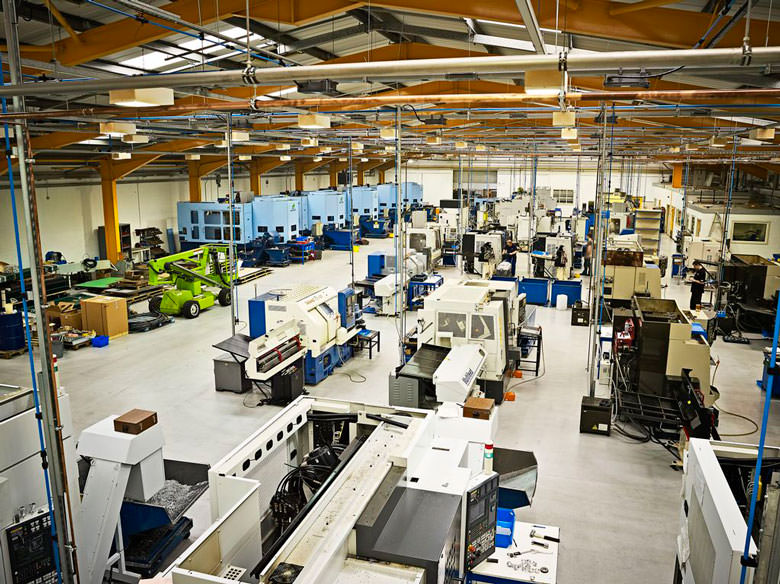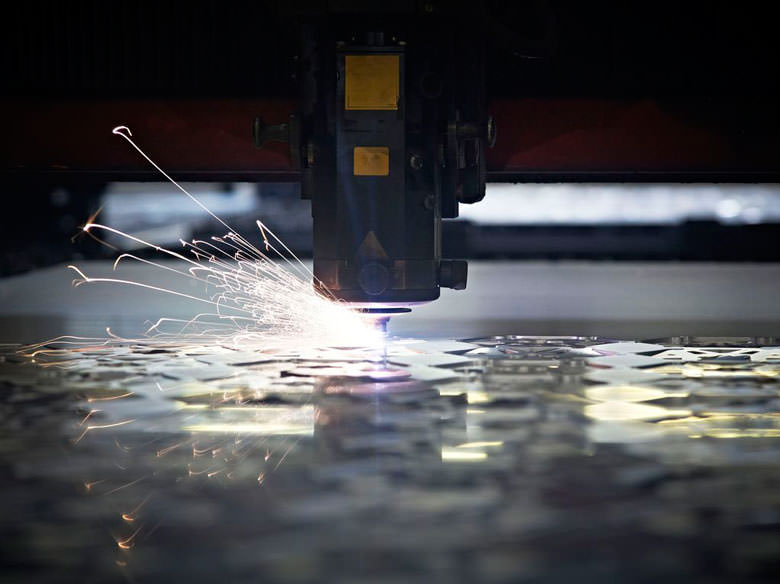Hope Technology – Factory tour and Product Development.

There can be no questioning that the birth of enduro has re-energised the cycling industry, providing a whole new outlet for inspiration and development of products that offer DH strength trimmed down to offer pedal-all-day lightness. With the rapid uptake of ‘enduro’ by the cycling industry bikes are rolling off the production lines more capable than ever before, lighter, faster and stronger. Scrutinizing the latest 160mm enduro offerings it is amazing how fast technology has evolved in the last 20 years, the suspension and brakes that we now take for granted carry us faster, further and over more technical terrain than early pioneers of the sport would have dreamed possible. Evolving alongside this flow of technology an esteemed UK company has helped sheppard in new developments and innovation, offering reliable and robust products that have stood the test of time.
I think I am now at a point in my life where I am squarely in the ‘old boys club’ and can talk fondly of all things ‘back in the day’! Long before Pinkbike, Facebook and even the internet, I would stand in the local bike shop, counting my pocket money and eying up the latest in bike bling. Looking past the garish anodised bar-ends and neon lycra, there would invariably be a locked glass cabinet on the counter with the latest CNC’d products crafted in the UK. As years rolled on and UK manufacturing shut up shop and eloped to far eastern shores, a handful of companies soldiered on! Shunning the cost per unit benefits of outsourcing production with the aim of keeping quality control and development in-house. Hope Technology have always been a big hitter in the componentry market, while other UK companies have come and gone, Hope has flourished and become a real UK success story! We took some time out to have a look round the Hope Technology factory and chat with their head designer about the future of Hopes involvement in enduro products.
Virtually every item bearing the Hope name is and always has been hand made in the UK – these were the principles which co-owners Ian Weatherill and Simon Sharp started out with 23 years ago.
Hope’s Story
The whole Hope story started out of necessity back in 1989 when co-owner’s Simon Sharp and Ian Weatherill weren’t happy with rim brakes on their mountain bikes. Both were engineers making tools at Rolls Royce Aerospace with a keen interest in motorcycle trials, so they decided to build some disc brakes for their own use. “Like any good Lego kit, things went from there; because we made the brakes we decided to make the hubs too and started selling them. This was well before disc brakes were well accepted in mountain biking, so the hubs took all of the attention, Hubs are still our biggest product, they are both durable and light with the best quality bearings and seals – we’ve really built our reputation on them” states Ian Weatherill.
There are many benefits of keeping the manufacturing in the UK, it provides complete control over the products, being able to inspect, test and develop continually. There’s no R&D wait time, it’s just there! Most of Hopes design staff can machine up a product, so from the conception of an idea a prototype can be made in no time. When SRAM introduced the XX1 cassette, Hope had the drawings for the XD free-hub done in a day and a working sample was ready for testing a day later.
Hopes racing heritage is clear to see from the moment you walk through the doors!
With 55 CNC machines in house, Hope is more on the F1 side of bike componentry production, owning more CNC aluminium cutting machines than the Mercedes F1 factory.
Hope Technology have fully embraced enduro, investing in riders such the UK’s up and coming enduro star Sam Flanagan. Sam is widely known in the enduro circles for his Sunday Epic Club rides in the Lake District, and his passion for exploring and riding is what enduro is all about.
Hope Rider Sam Flanagan pinned at the Punta Ala Enduro World Series Opener.
Product Development
We sat down with Hope Technology head designer Guillaume Leon to chat about his take on enduro focused products. Now based in Briancon, France, Guillaume started at Hope through a student work placement at the Barnoldswick factory and never left. Guillaume now works from his home in France which is the perfect testing ground for all Hope components.
Keeping manufacturing in-house Hope Technology can rapidly prototype new products.
What does “enduro” mean to you?
Enduro racing to me is what rally racing is to cars with the transitions and timed stages. Enduro riding is different – this is more about “just riding” and having adventures. In some ways it is difficult to explain how Hope are approaching “enduro” as it is nothing new to us. Our riders, employees and business have always embraced “enduro” or “exploratory” riding in terms of the products we design and the methods we use to test them, just now there is an official title for that scene. At Hope we have always been passionate about riding bikes. Since forming the business, co-owners Ian and Simon along with myself and other employees have taken part in many enduro’s over the years from the Megavalanche, to more independent challenges such as riding off-road from Chamonix to Zermatt. Simon Sharp or Captain Invincible as he is sometimes known is often the main instigator of weekend long rides in the Lake District which involved hours in the saddle and numerous ridges later. He has also recently established “Simon’s Enduro School”, which essentially consists of timed runs of enduro stages selected by Simon at our local trail centre in Gisburn Forest.
You are the brains behind the Hope Integrated Bash Ring (IBR), please tell us a bit more about how this product came about and why you thought there was a demand for it in the “enduro” market?
The product was initially designed for cross-country riding and cyclo-cross. As we were designing and testing the IBR, it became apparent to us that there was a demand in the enduro market for this sort of chain-device and bash ring which could offer weight gaining benefits along with practicality and reliability.
What sort of testing does Hope carry out on new products before they come to market?
We believe in making durable products that work. We know that our products aren’t always the lightest on the market but all our attention is devoted to designing and manufacturing products which work. This is what enduro needs; riders are in the saddle for numerous hours often in the depths of the trails and need the comfort that they can rely on their components to work. In terms of our enduro type products, our understanding of the needs of the riders feeds into the type of testing we carry out. For the IBR each prototype was ridden in the worst possible riding conditions. During testing we prayed for rain and snow to create a range of different types of mud – we didn’t have to sit around long in the UK!! With this sort of testing it’s purely a case of trial and error we keep riding, testing, designing, riding, testing and designing until we are 100% happy with the product. It took around three years for us to get the IBR in a position where we were happy to bring it to market.
Our 4 pot brakes are widely used by many enduro riders. Our current M4 brakes are the product of years of testing and evolution of the original DH4 which became the Enduro 4 which became the M4. They offer a perfect combination of power and light weight. The M4’s are continuously put through field tests by staff and riders. We also use a Dyno machine in our test lab. The brake test rig includes a motor driving the brake disc. The brake calliper is mounted onto a torque arm with a load cell attached to it. We can fit any calliper style and disc size up to dia203mm. The controller enables us to control the Dyno speed which simulates the bike velocity up to 70km/h and the pneumatic actuator operating the brake lever. We can aquire accurate data on variables such as operating hand force, normal and tangential force onto brake pads, pad friction coefficient and absolute braking power. We have recently acquired a data logging system similar to the one used in motorsport racing. This allows us to monitor up to 12 channels, including temperatures (disc, pad and calliper), brake line pressure, wheel speed and deceleration, measuring data at 100Hz. The logger has a built in GPS and accelerometer.
Hopes brake Dyno feeds vital information back to designers, allowing for improved power and modulation.
Do you have any new products in the pipeline which the enduro riders might be interested in?
The chain devices we currently manufacture are top guides only. These guides work great with the IBR for trail riding but we know a lot of racers prefer to use a chain device with top and bottom guides. This is something that we are working on and hoping to have ready by the end of the year. Other products that we are looking at are telescopic seat posts and our own range of rims. But like with all our products they won’t be released until we are happy to put our name against them!
Article: Trev Worsey
Did you enjoy this article? If so, we would be stoked if you decide to support us with a monthly contribution. By becoming a supporter of ENDURO, you will help secure a sustainable future for high-quality mountain bike journalism. Click here to learn more.












